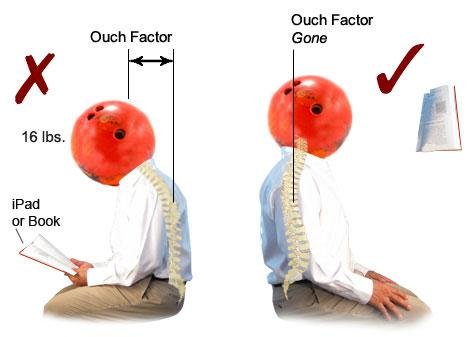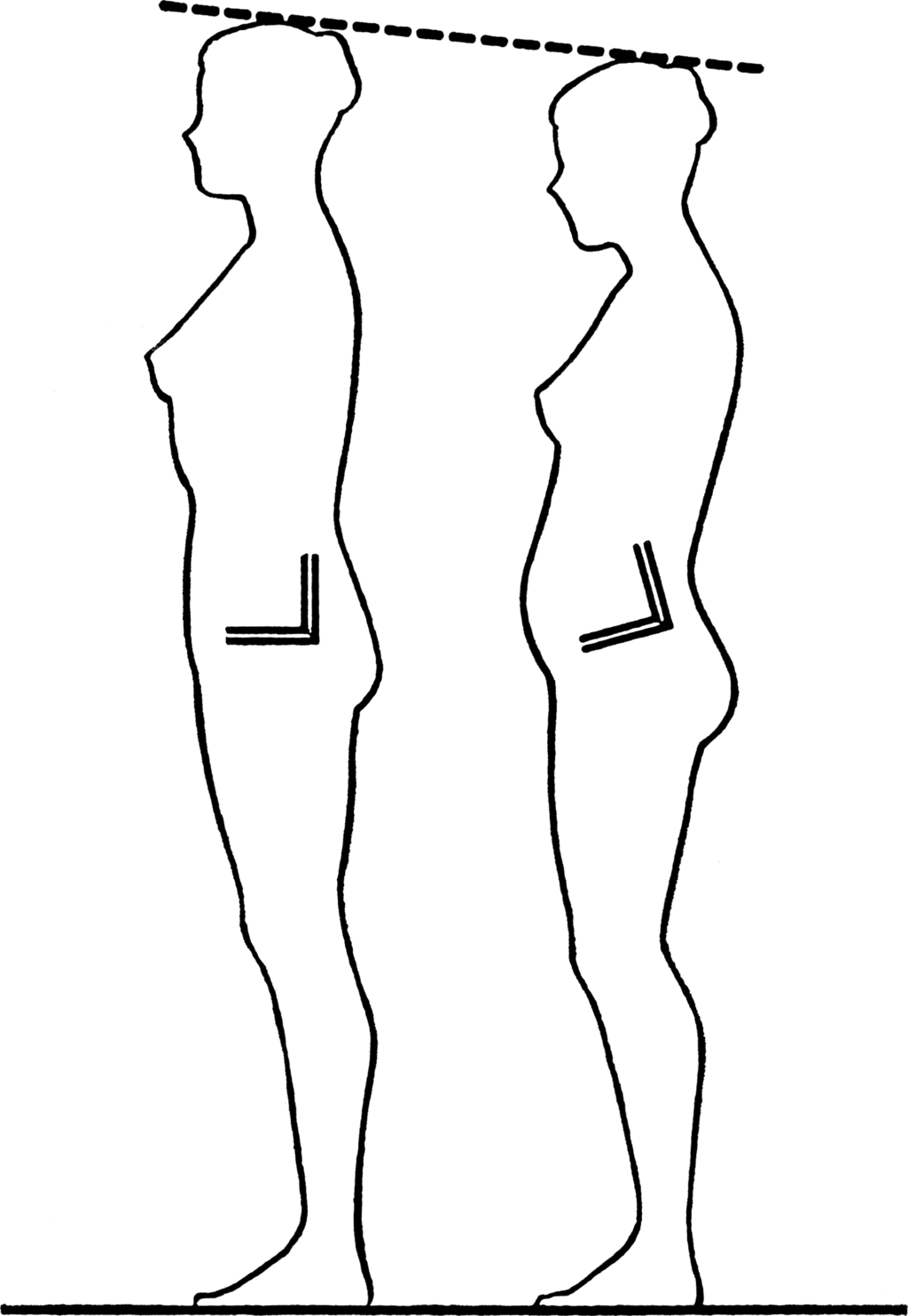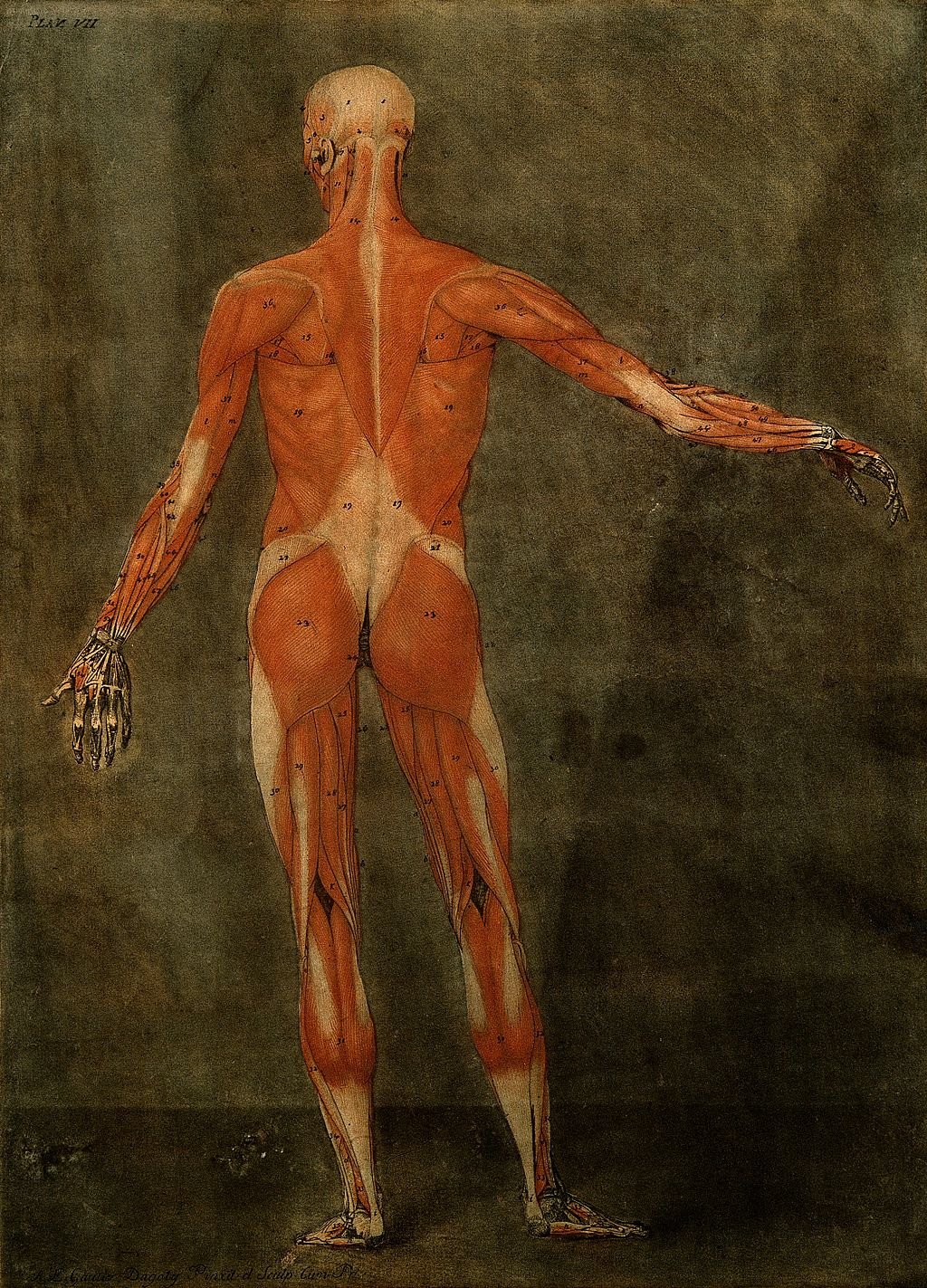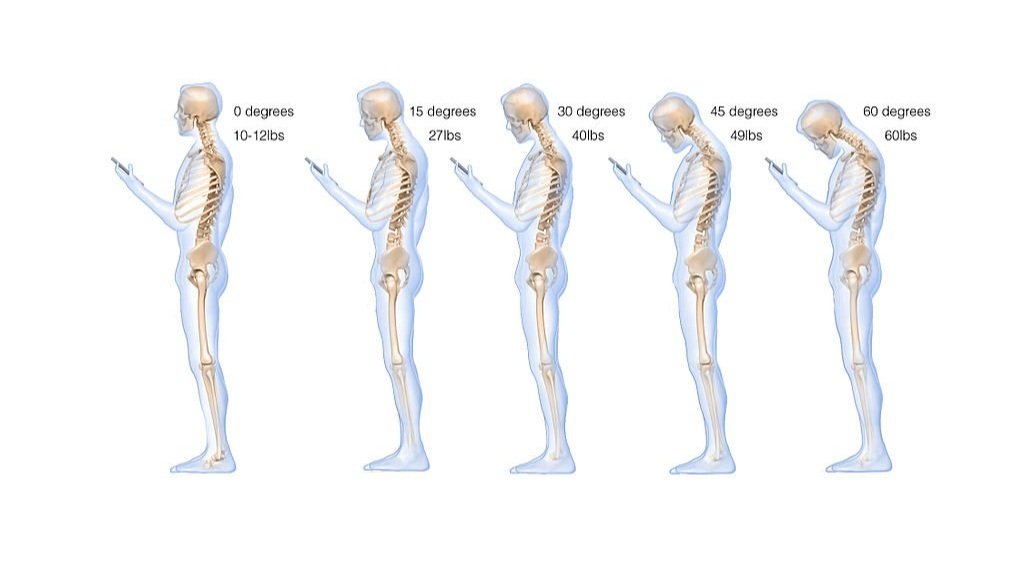Neck_of_scapula02.png BodyParts3D is made by DBCLS., CC BY-SA 2.1 JP <https://creativecommons.org/licenses/by-sa/2.1/jp/deed.en>, via Wikimedia Commons
Deborah Tosline wrote and published “Skin Remodeling DIY: An Introduction to the Underground World of Do-It-Yourself Skincare” in 2015. Her approach to skin care is based on a scientific background, love of research and over 30 years of DIY skincare experience.
Follow Skin Remodeling DIY on Facebook for weekly messages on health and beauty.
This article summarizes the anecdotal results, experience and path that I took to correct my neck posture. Typically, I summarize research on a particular topic for monthly articles. Periodically, I write about my personal experience. This article is another long story about me. I apologize in advance for the personal focus but do hope that someone may benefit from my experience.
In my mid-late 50’s I began in earnest to try to correct my neck posture; I soon learned that I would have to correct my body posture first and I continue today. The effort has been challenging and rewarding but has required a daily consciousness and perseverance practice like so many good things in life.
I first became aware of my poor neck posture while checking an updo in a mirror. I glanced at the back of my neck and to my surprise and disappointment I saw skin degradation that told a story of wrong neck posture. As I studied my newly identified condition, I straightened my neck posture which smoothed the divets and deep lines that the poor neck posture promoted.
Photo of the back of author’s neck taken in November 2017
Photo of the back of author’s neck taken in May 2022
Dang. Now what? An emergency spine shift felt impossible. As I began to modify my posture the efforts felt unnatural, mechanical, robotic and unsustainable, I continued in a narrow sort of way.
Time carried on.
Periodically, I would experience tight muscles and discomfort in my hands, wrists, elbows, shoulders or neck. I found a Genius Progressive Physical Therapist (GPPT, my title for her) who instructed and helped me heal every time I had an issue. In the past and today, I build, garden, practice strong yoga, landscape, etc. I demand a lot from my body and I attributed those demands to the periodic tight/weak muscle imbalances that I experienced from time to time.
Eye_Level_Reading.jpg, Dalora80, CC BY-SA 3.0 <https://creativecommons.org/licenses/by-sa/3.0>, via Wikimedia Commons
On one return visit, my GPPT said to me, “you will never eliminate these issues until you fix your body posture”. I asked her to help me correct my neck posture but she said that I needed to begin with my lower spine.
In order to work and take care of myself I’ve followed the type of healthy lifestyle that Mainstream Cultural folks typically think of as extreme but what a few knowledgeable insiders know of as a method to achieve high quality of life health. Despite that, I did not do much soft-tissue body care for example getting massages to eliminate muscle knots. I now know that I can mitigate, improve and integrate correct posture into my holistically healthy lifestyle if I chose to.
PostureFoundationGarments04fig1.png AnonymousUnknown author, Public domain, via Wikimedia Commons
I remember having lower back issues when I was less than 10 years of age. I took rigorous tap, modern and jazz dance lessons from the age of 5 until I was 10. When the dance instructors asked the class to lay on the ground and press their lower back to the floor, I never could flatten my back, ever. My back ached but I didn’t tell anyone. Fast forward through about 15 years of modern, ballet, and African dance as an adult; about 30 years of yoga; and almost daily cardio I continued on with the same lower back issue. It felt normal to me. Interestingly, I had a surprisingly weak core, despite all the exercise. Practicing core-based Pilates was nearly impossible for me so I avoided it.
No matter how flexible and apparently strong I was, I never could press my lower back to the floor and the low-grade back pain persisted throughout my life.
Vertebral_column_disorders_-_Normal_Scoliosis_Lordosis_Kyphosis_--_Smart-Servier.jpg Laboratoires Servier, CC BY-SA 3.0 <https://creativecommons.org/licenses/by-sa/3.0>, via Wikimedia Commons
My GPPT zeroed in on my tight, curved, lower back and diagnosed my condition as Anterior Pelvic Tilt (APT) characterized by an over-arching curved or swayed back with forward pushing hips that result in a rotated or tilted pelvis. The joints are held in this position in a chokehold of imbalanced lower back, hip and thigh muscles. The GPPT would loosen the lower back muscles and I would try to flatten my back to the ground and relax. The persistently tight muscles would pull my back up into a strongly curved arch once again.
While APT may not cause pain initially, over time it stresses the spine and supporting tissue aggravating and negatively impacting physical health and may result in:
Chronic back pain
Kyphosis (rounded shoulders and hunched neck… AHA!!)
Lordosis (swayback posture (yes)
Pain in hips, buttocks, or legs (beginning)
Weakness in the legs or feet
To reverse and heal APT, the GPPT began instructing, treating and guiding me through the process of loosening tight muscles here, strengthening weak muscles there by assigning flexibility, eccentric, strengthening exercises, and all that.
The onus was on me to heal myself once I learned the requirements. I took my posture correction seriously, began the journey about 5 years ago and continue today. It’s gonna take time for me to become holistically strong enough to hold my new posture as an unconscious habit.
In this article, I provide an overview of the methods that I use to correct my posture, but I don’t describe the details of each method. I interchange a variety of Do-It-Yourself (DIY) methods and integrate new knowledge into my posture correcting practice.
Based on my experience to date I feel and believe that my choice and effort to correct my posture will help to prevent pain from imbalanced strength and flexibility. I cannot describe how important it is for us to remain holistically flexible and strong to promote healthy muscles, joints, bones, and all.
I am not a doctor. You might say that I am a nerd, reading, reading, reading and researching to gain knowledge and identify methods and tools to promote good physical health.
APT results in a body imbalance from overly weak and super tight muscles and an unaligned pelvic posture that negatively impacts the associated bones and joints, surrounding tissue and overlying fascia that binds everything together and lies beneath the skin. This system of bone and soft tissue melds together to support the wrong and imbalanced posture. It felt like I was cemented in the APT posture.
As I began to consciously try to un-tilt and balance my pelvis the associated bones and tissues revolted! I pushed against the limits of tight and weak muscles that had grown accustomed to holding a wrong posture. As I strive to correct my posture by gaining holistic flexibility and strength, I experience episodes of muscle, ligament and tendon discomfort as my body slowly loosens, shifts, strengthens, and molds into the new correct body posture.
I use this mental approach to correct my posture and have had these experiences:
strive to use the correct posture each day
forget and fall back into poor posture each day
re-attempt correct posture each day, over and over
forget good posture when working hard and try to notice and correct
periodically sore and tight in satellite muscles
a bit physically imbalanced during posture transitions, diminishes over time
the body is in transition, is not familiar and the new posture takes constant effort until increase muscle flexibility and strength
The_muscles_of_the_human_body,_first_layer,_seen_from_the_ba_Wellcome_V0007800.jpg See page for author, CC BY 4.0 <https://creativecommons.org/licenses/by/4.0>, via Wikimedia Commons
I use DIY methods to physically correct my posture. To be honest, changing one’s posture requires effort. One must educate themselves to identify specific stretches and strengthening exercises associated with the posture revision and the process requires a daily effort to realize change.
To correct my posture and address the side effects I used the following DIY approaches:
Trigger Point and massage tools such as a body roller, 6-inch massage ball, yoga and tennis balls, gua sha and more to loosen muscles
Trigger Point therapy book to learn how to loosen muscle knots, tightness and relieve pain
YouTube videos to learn about Trigger Point therapy, stretching and strengthening exercises
other daily stretches and strengthening exercises for muscle tightness and discomfort
powerful reciprocating electric massager to loosen tight and sore muscles
yoga practice with a large variety of poses for holistic muscle stretching and strengthening
DIY near-infrared and red-light therapy to reduce inflammation and pain
DIY home steam sauna to loosen muscles
Epsom salt baths to relieve muscle tightness
Continue walking, hiking, Nordic Trac, Kukuwa dance and yoga most days to remain strong
Over time, my lower back and hip muscles gained flexibility and strength as I continued to strive to shift my pelvis into a neutral position. My core muscles became stronger because strong abs are required to hold my new correct posture. As I became better at holding my pelvis and hips in a neutral and level posture, I began to correct my middle back posture by consciously moving my ribcage down and towards my spine. This further strengthened my abs. For the first time in my life and at the age of 63 I have a minor six-pack!
The next phase of my body posture realignment involved my shoulders and at last, my neck! I was not able to correct the upper portion of my spine until the lower portion of my spine and the associated bones and muscles were more balanced. As the soft tissue associated with the lower spine loosened and strengthened I was able to focus on my upper spine, while still remaining conscious of the continued lower spine work required.
The head should be balanced at the top of the spine. My head tilts forward which causes the spine to hold additional weight and compresses the spine. The forward neck posture caused skin folds on the back of the neck resulting in divets and deep lines. My new upper body posture consists of holding my shoulders back and down and aligning my neck at the top of the spine. The new posture feels unnatural in the moment and I easily revert to poor neck posture. However, I’ve begun to notice when my head is not in alignment for example, while working in the garden or during yoga and I am able to adjust my posture which strengthens the associated muscles.
The new correct posture will feel more natural over time.
There is another aspect to correcting one’s neck posture. The skin overlies, stretches and molds to the shape of the soft-tissue, muscle and bony infrastructure of our posture. The skin must adapt when the underlying support shifts and lengthens here stretching the skin or shortens there loosening the skin. It takes time and effort for the skin to adapt and tighten where it may have stretched out during wrong neck posture. I use my standard DIY advanced skin care methods and tools on a daily/weekly basis and included a couple of actual MedSpa treatments to tighten neck skin subsequent to correcting my neck posture and will report on those in a future neck/platysma muscle article.
PostureFoundationGarments04fig1.png AnonymousUnknown author, Public domain, via Wikimedia Commons
As the body strengthens into the healthy posture, I hope (fingers crossed!) that muscle memory will reduce the amount of conscious effort required for me to maintain a correct posture. No matter, I’ve resigned myself to the fact that I need to apply a constant conscious effort to maintain a healthy posture that will carry me gracefully, fully functioning, and pain free, hiking, biking and athletically moving through my ages however long that may be. If I stay strong, I believe that I can take care of myself as needed, have fun and age gracefully.
P.S. for the first time in my life that I remember, when I lay on my back, I am able to press and flatten my lower back into the floor!
Correcting neck posture is not a one and done deal. Until the entire bony and soft tissue structure has shifted and melded into their new positions, the process to correct the posture requires constant conscious effort. Correcting posture takes time. You are probably already busy taking care of a lot of stuff to survive. You need you; you can’t do what you need to do without you. Take good care of yourself.
If you need more information, go to the library, search the Internet, read my past Blog articles, or it would be an honor to me if you purchased my book. Thank you!
Take good care of yourselves!
XO Deborah
This article is intended to be used as general information only and is in no way intended to replace medical advice, be used as a medical treatment program, diagnosis, or cure of any disease or medical condition. There are no warranties, expressed or implied, regarding the effectiveness of the practices described in this article. Products or substances discussed herein are for educational purposes only and are not intended as recommendations of the author.







